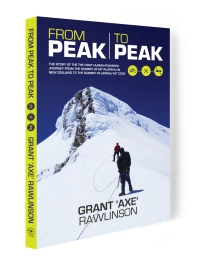Simpson’s Donkey – the worlds most beautiful rowing boat
I would like to introduce you to my trusty steed ‘Simpon’s Donkey’. (To read the background of the name click here.)
The little donkey is 6.8m in length and 1.6m in beam (width). She is a specially designed ocean rowing boat, built to make ocean crossings, for months at a time. She is NOT designed to row around shallow waters and close to shore where she is in mortal DANGER of running aground due to tides/winds and currents. Unladen (i.e. without food/water and myself) she weighs about 250/300kg. Fully loaded with 70 days of food, 60 litres of emergency water, equipment and myself, she will be around 600/700kg in weight. Which is a lot for one person to push along with a pair of oars, but in terms of ocean rowing boats she is considered on the lighter end of the scale.
Manufactured by Rannoch Ocean Adventures in the UK, and designed by Phil Morrison a naval architect, she is made from a blend of fibreglass and carbon fibre. Her hull is VERY strong (I have hit the material as hard as I can with a hammer and made only a small dent). She has a number of design enhancements over traditional ocean rowing boats, the biggest ones being:
– she does not need to be ballasted to self-right. Meaning in the event of a capsize, due to the design of the boat she should turn back up again without the need to have the boat packed with weight in a certain way which older ocean rowing boats required.
– she has a keel mounted rudder as opposed to a transom mounted rudder. The keel mounted rudder is stronger and means 100% of the rudder is in the water aiding the control of the boat. The old rowing boats had heavy transom mounted rudders with most of the rudder being out of the water. These were heavy and prone to brakeage when waves hit their exposed surfaces.
– the cabin in the bow end. Older boats had the cabin in the stern end. Due to the shape of the cabin door offering the most windage on the boat, having the door at the bow end means following breezes push along nicely and head winds slip over the profiled nose section.
On board I carry all the safety equipment an ocean going yacht would carry. Here is a list of some of the main equipment I have (this list is NOT complete and is for general interest only):
– 1 x Eperb beacon
– 2 x PLB emergency distress beacons
– 1 x survival suit
– 1 x life raft
– 1 x handheld Isatphone 2 satellite telephone (Supplied by Network Innovations Singapore)
– 1 x permanently installed Wideye™ iFleetONE™ satellite terminal with email/phone (supplied by ADDVALUE technologies Ltd in Singapore)
– 1 x GETAC B300 ruggedised notebook computer (supplied by GETAC from Taiwan)
– GTMailPlus email software supplied by GTMaritime Singapore
– 2 x SPOT GPS trackers (supplied by Marcom Watson, Australia)
– 1 x deLORME inreach explorer supplied by Maprogress, New Zealand)
– Electric watermaker
– Handheld watermaker
– 2 x fire extinguishers
– 1 x set of emergency flares
– 2 x SIMRAD GPS chartplotters with NAVIONICS backgrouns maps installed (All SIMRAD equipment supplied by SIMRAD and supported through CAN Traders Pte Ltd Singapore)
– 1 x SIMRAD 25W fixed installation marine VHF radio
– SIMRAD class B AIS
– Echomax electronic radar reflector
– 2 x handheld portable ICOM marine VHF radio’s
– 2 x waterproof emergency signalling torches
– Sea anchor and series drogues
– 70 days food
– 2 x jetboil gas cookers
– Clothing for all conditions
– Category A first aid kit
– 60 litres of drinking water
“Look after the boat and the boat will look after you” is the adage drummed into me by Rannoch’s technical wizard Mike Wood. And look after that little Donkey I plan to do.
Time to departure less than two weeks. Tick, tock, tick, tock…..
Posted on October 4, 2017, in Rowing Home. Bookmark the permalink. 1 Comment.








Pingback: What are you passionate about in life? | Minimalist in the city